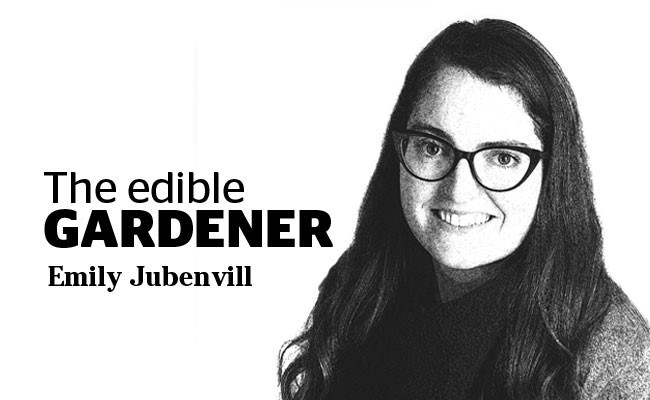Are you a first-time gardener still dreaming of having your own veggie patch?
This month I’m going back to the basics. June is a great time for first-time vegetable gardeners to get started. Our soils have warmed up and we should still have some rain and cool-ish weather before summer really sets in (no guarantees of course).
I learned how to grow food through experimenting and diving in, but I did have some help from a more experienced friend in my first garden plot while at university. I remember feeling very excited, arriving at our plot for the first time with new packages of seeds in hand, and then realizing I had no idea what to do. The seeds were all different sizes and shapes, and the information on the back of the package was sort of vague. My friend kindly showed me the steps I’m going to share with you here, and within a couple of weeks we had all sorts of vegetables sprouting up.
How do you plant a seed? First of all, leave your fear behind. Seasoned gardeners may think this is a ridiculous thing to say. However, I’ve seen many people stand with a pea or bean seed in hand, hovering above the soil and looking lost and afraid to do it wrong. Generally speaking, seeds want to grow. That’s what they’re made to do. You might plant a little shallow or a little deep, or get your spacing wrong, but it’s unlikely that absolutely nothing will grow.
Second, take a few minutes to prep your soil. Pull out any weeds that have popped up, sprinkle some compost on top, and work it into the top two inches of soil with your fingers, rake, or hand tool of your choice. Smooth it out so you have a nice flat surface to work with. Create a straight line that you’re going to plant along, and use your hand to create a little trench (or furrow) along that line. This will be the row you plant in.
Third, put the seed in the soil. Here is a good rule of thumb for this step: three times the width of the seed is a good depth to plant it. For a pea or bean seed this could be over an inch deep, but for a carrot you’ll just be dusting them with soil. On the back of every seed package they will give you the distance you should keep between seeds in a row, and the distance between rows. If this is your first garden use these dimensions, and then next year you can decide if you want to plant more densely.
Pat the soil down with your hand after you have covered up the seeds. This improves the contact that your seeds will have with the soil around them, and will improve your germination rate. Water your seeds. You want your soil to be moist in the top two to three inches of soil. Use a very gentle setting on your hose nozzle when you’re watering seeds so all your hard work isn’t washed away. Keep an eye on your rows. Water them as needed, and within a week or so you should have little seedlings poking out of the soil.
A little hint: carrots are notoriously hard to germinate. Soak a piece of burlap in water and lie this over your carrot rows. The burlap will help keep the level of moisture in the soil consistent, which will make your carrot seeds very happy. Just make sure you check it often and remove it as soon as you see the carrots germinating so they get the light they need to survive.
Emily Jubenvill grew up on the North Shore and is passionate about growing fresh organic food. When she’s not in the garden you’ll find her on a mountain or by the sea. She’s starting an organic farm, and working for the North Shore Neighbourhood House’s Edible Garden Project. You can reach her at [email protected] or ediblegardenproject.com.



